
This 23-minute video provides an introduction to viruses. [Biology playlist: Lesson 19 of 71].
- Subject:
- Biology
- Life Science
- Material Type:
- Lecture
- Provider:
- Khan Academy
- Provider Set:
- Khan Academy
- Author:
- Salman Khan
- Date Added:
- 07/15/2021

This 23-minute video provides an introduction to viruses. [Biology playlist: Lesson 19 of 71].

CK-12 Biology Workbook complements its CK-12 Biology book.
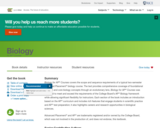
Biology for AP® Courses covers the scope and sequence requirements of a typical two-semester Advanced Placement® biology course. The text provides comprehensive coverage of foundational research and core biology concepts through an evolutionary lens. Biology for AP® Courses was designed to meet and exceed the requirements of the College Board’s AP® Biology framework while allowing significant flexibility for instructors. Each section of the book includes an introduction based on the AP® curriculum and includes rich features that engage students in scientific practice and AP® test preparation; it also highlights careers and research opportunities in biological sciences.
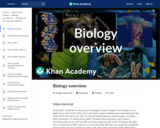
Overview of biology, the study of life.

Students examine the structure and function of the human eye, learning some amazing features about our eyes, which provide us with sight and an understanding of our surroundings. Students also learn about some common eye problems and the biomedical devices and medical procedures that resolve or help to lessen the effects of these vision deficiencies, including vision correction surgery.

This ZOOM video segment shows how to create a self-contained environment and explores evaporation, condensation, and precipitation.

This interactive resource adapted from NASA describes the different temperature, precipitation, and vegetation patterns in seven biomes: coniferous forest, temperate deciduous forest, desert, grassland, rainforest, shrubland, and tundra.
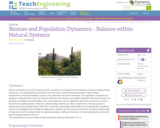
With a continued focus on the Sonoran Desert, students are introduced to the concepts of biomes, limiting factors (resources), carrying capacity and growth curves through a PowerPoint® presentation. Abiotic factors (temperature, annual precipitation, seasons, etc.) determine the biome landscape. The vegetative component, as producers, determines the types of consumers that form its various communities. Students learn how the type and quantity of available resources defines how many organisms can be supported within the community, as well as its particular resident species. Students use mathematical models of natural relationships (in this case, sigmoid and exponential growth curves) to analyze population information and build upon it. With this understanding, students are able to explain how carrying capacity is determined by the limiting factors within the community and feeding relationships. By studying these ecological relationships, students see the connection between ecological relationships of organisms and the fundamentals of engineering design, adding to their base of knowledge towards solving the grand challenge posed in this unit.
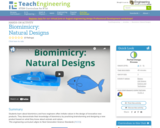
Students learn about biomimicry and how engineers often imitate nature in the design of innovative new products. They demonstrate their knowledge of biomimicry by practicing brainstorming and designing a new product based on what they know about animals and nature.
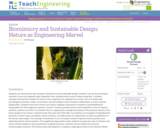
Students are introduced to the concepts of biomimicry and sustainable design. Countless examples illustrate the wisdom of nature in how organisms are adapted for survival, such as in body style, physiological processes, water conservation, thermal radiation and mutualistic relationships, to assure species perpetuation. Students learn from articles and videos, building a framework of evidence substantiating the indisputable fact that organisms operate "smarter" and thus provide humans with inspiration in how to improve products, systems and cities. As students focus on applying the ecological principles of the previous lessons to the future design of our human-centered world, they also learn that often our practices are incapable of replicating the precision in which nature completes certain functions, as evidenced by our dependence on bees as pollinators of the human food supply. The message of biomimicry is one of respect: study to improve human practices and ultimately protect natural systems. This heightened appreciation helps students to grasp the value of industry and urban mimetic designs to assure protection of global resources, minimize human impact and conserve nonrenewable resources. All of these issues aid students in creating a viable guest resort in the Sonoran Desert.
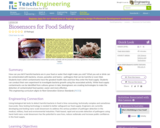
How can you tell if harmful bacteria are in your food or water that might make you sick? What you eat or drink can be contaminated with bacteria, viruses, parasites and toxins—pathogens that can be harmful or even fatal. Students learn which contaminants have the greatest health risks and how they enter the food supply. While food supply contaminants can be identified from cultures grown in labs, bioengineers are creating technologies to make the detection of contaminated food quicker, easier and more effective.

This learning video introduces high school students to a topic they would not ordinarily study in school, biotechnology, and to different applications of biotechnology that relate to the main theme of the module - making the desert greener. After reviewing traditional methods used for manipulating plants to produce desired traits, students will learn about the methods of making transgenic plants. Dr. Ziad discusses a real world problem that is critical in his country, Jordan, where much of the land is desert. A prerequisite to this video lesson is some background in biology.

There are almost as many types of bird beaks as there are types of food that birds like to eat. This collection of images shows a wide range of beaks and the types of foods handled by each.
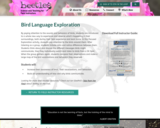
By paying attention to the sounds and behaviors of birds, students are introduced to a whole new way to experience and observe what’s happening in their surroundings, both during their field experience and back home. In this Focused Exploration activity, students pay attention to the birds around them. After listening as a group, students imitate calls and notice differences between them. Students think about and discuss the different messages birds might communicate, then they individually watch and listen to birds from a Sit Spot. When the group gathers again, students compare their observations and make a large map of the bird vocalizations and behaviors they observed.

In this Nature video, learn about the extraordinary impact that birds have on the agriculture of a small Indian community.

Students tend to be fascinated by colors and patterns of organisms, and by thinking and learning about these and other adaptive strategies. Colors and patterns in nature are a great entry point to understand adaptations. This activity focuses on how organisms’ patterns and colors help them stand out or blend in with their environment, and how this helps them survive. Students observe the main colors in the landscape, then search for plastic animals hidden there, noticing which blend in with their surroundings and which stand out. Then, students discuss what made the animals blend in or stand out, construct explanations for how this could help the animals survive, and learn four categories for color and pattern adaptations: camouflage, mimicry, warning, and attraction. Students apply these concepts as they search for real organisms in the area, then discuss how patterns and coloration might help the organisms survive in their habitat.

The eye’s retina receives and reacts to incoming light and sends signals to the brain, allowing you to see. One part of the retina, however, doesn't give you visual information—this is your eye’s “blind spot.”
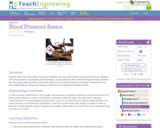
Students study how heart valves work and investigate how valves that become faulty over time can be replaced with advancements in engineering and technology. Learning about the flow of blood through the heart, students are able to fully understand how and why the heart is such a powerful organ in our bodies.

The purpose of this lesson is to teach students about blood and its components while instilling an appreciation of its importance for survival. The lesson takes a step-by-step approach to determining the recipe for blood while introducing students to important laboratory techniques like centrifugation and microscopy, as well as some diseases of cell types found in blood. It also highlights the importance of donating blood by explaining basic physiological concepts and the blood donation procedure.

In this video segment, adapted from NOVA, Dr. Judah Folkman uses the scientific method to discover how cancer cells induce the formation of new blood vessels, which in turn nourish those cancer cells.